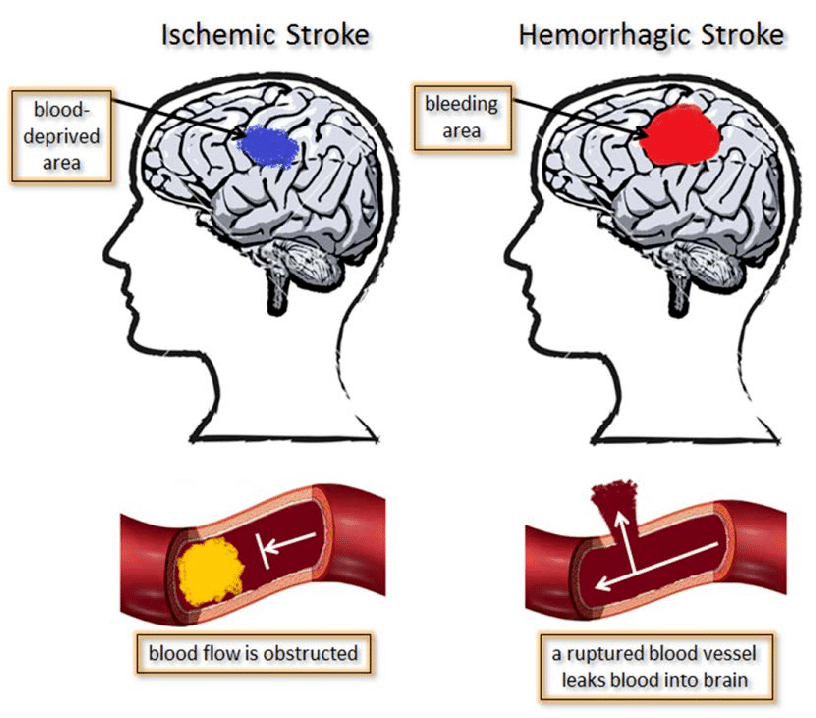Prompt medical management of a stroke can dramatically improve health outcomes. The first step is to identify a stroke and contact Emergency Medical Services (911) to be taken to the hospital.
The next step is to classify the stroke. There are two types of strokes, which have different treatments. Therefore, it is important to take an radiographic image of the head, referred to as Computed Tomography (CT), commonly referred to as a Cat scan. This will assist the doctors in determining the type of stroke.
1. Ischemic Stroke: This type of stroke is caused by a reduction of blood flow to the brain. As the brain receives less blood, the tissue is deprived of nutrients and oxygen.
The two most common treatment methods for ischemic stroke are as follows;
Tissue Plasminogen Activator (tPA): This helps dissolve any clots in the blood vessels which may be blocking blood flow to the brain. It must be administered within 4.5 hours of stroke onset.
Mechanical Thrombectomy (MT): This involves a trained operator accessing your blood vessels through the groin or wrist, and weaving the wire up into the vessels of your brain. Once in the brain, the operator will attempt to remove the clot in order to unclog the blood vessel and restore blood flow. This must be done within 24 hours of stroke onset.
2. Hemorrhagic Stroke: This type of stroke is caused by bleeding in the head after a vessel ruptures.
The most common methods for treating hemorrhagic stroke involve locating the ruptured vessel and securing it to prevent further vessel damage and stroke.
Clipping: This is an open surgery which involves placing a metal clip around the vessel defect to prevent further hemorrhage.
Coiling: This involves accessing your blood vessels through the wrist or groin, and placing small metal coils within the defect in the blood vessel. This helps heal the blood vessel and prevent further hemorrhage.
Flow-Diverter Stents: This involves accessing your blood vessels through the wrist or groin, and placing a metal scaffolding across the defect to prevent further hemorrhage and promote healing.
